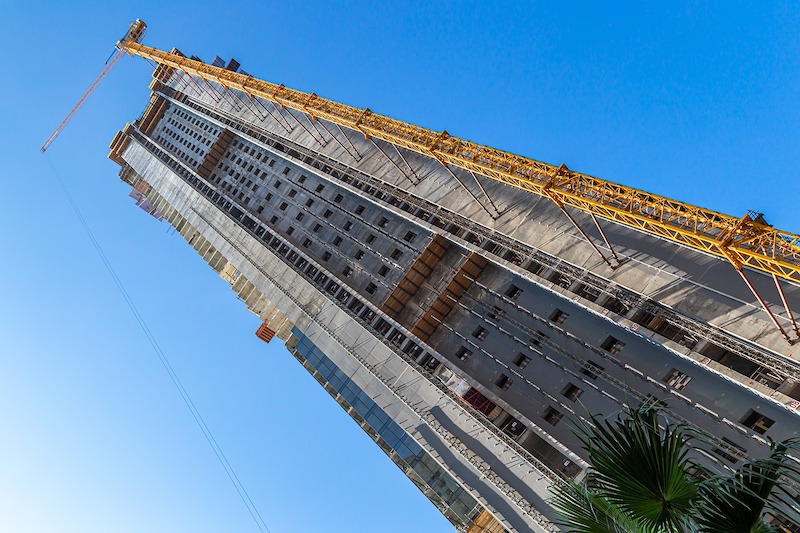Construction spending decreased 0.2 percent from November to December as declines in public and private nonresidential projects outweighed a large rise in single-family homebuilding, according to a new analysis of federal data released today by the Associated General Contractors of America. Association officials noted that its recent survey found widespread optimism about prospects for projects available to bid on in 2020 but they urged officials in Washington to follow through on announced plans for infrastructure spending increases.
“Both the actual spending totals for December and our members’ expectations for 2020 point to a positive year for all major categories of construction,” said Ken Simonson, the association’s chief economist. “Continuing job gains throughout the nation, along with low interest rates, make a good year for residential construction especially likely, while spending many nonresidential categories should match or exceed 2019 levels.”
Construction spending totaled $1.328 trillion at a seasonally adjusted annual rate in December, a decrease of 0.2 percent from November but a gain of 5.0 percent from December 2018, according to estimates the U.S. Census Bureau released today. Private residential spending increased 1.4 percent for the month, led by a 2.7 percent increase in single-family homebuilding. Private nonresidential spending declined 1.8 percent for the month and 0.1 percent compared to December 2018. Public construction spending slipped 0.4 percent from November but jumped 11.5 percent from a year earlier.
For 2019 as a whole, spending totaled $1.303 trillion, a dip of 0.3 percent from the 2018 total. Private residential spending declined 4.7 percent for the year, private nonresidential spending was flat, and public construction spending increased 7.1 percent.
The new spending data comes as the association’s 2020 Construction Outlook survey found that for each of 13 project types, more contractors expect an increase in 2020 than a decrease in the dollar value of projects they compete for. On balance, the 956 respondents were most optimistic about water and sewer construction, followed by highway and bridge projects, transportation structures (including airports, transit, rail and port facilities), schools, and hospitals.
Association officials said continued growth in highway and other transportation construction depends in part on timely action by Congress and the President to approve new infrastructure spending plans. The officials noted that the current highway and transit funding legislation expires in less than eight months, and they urged policy makers to reach agreement swiftly on how to boost funding for all types of infrastructure.
“Expanding and modernizing the transportation infrastructure is essential for continued economic health,” said Stephen E. Sandherr, the association’s chief executive officer. “That is why Congress and the Trump administration must act quickly to boost investments in all modes of transportation.”
View the 2020 Construction Outlook Survey.
Related Stories
Market Data | Aug 12, 2021
Steep rise in producer prices for construction materials and services continues in July.
The producer price index for new nonresidential construction rose 4.4% over the past 12 months.
Market Data | Aug 6, 2021
Construction industry adds 11,000 jobs in July
Nonresidential sector trails overall recovery.
Market Data | Aug 2, 2021
Nonresidential construction spending falls again in June
The fall was driven by a big drop in funding for highway and street construction and other public work.
Market Data | Jul 29, 2021
Outlook for construction spending improves with the upturn in the economy
The strongest design sector performers for the remainder of this year are expected to be health care facilities.
Market Data | Jul 29, 2021
Construction employment lags or matches pre-pandemic level in 101 metro areas despite housing boom
Eighty metro areas had lower construction employment in June 2021 than February 2020.
Market Data | Jul 28, 2021
Marriott has the largest construction pipeline of U.S. franchise companies in Q2‘21
472 new hotels with 59,034 rooms opened across the United States during the first half of 2021.
Market Data | Jul 27, 2021
New York leads the U.S. hotel construction pipeline at the close of Q2‘21
Many hotel owners, developers, and management groups have used the operational downtime, caused by COVID-19’s impact on operating performance, as an opportunity to upgrade and renovate their hotels and/or redefine their hotels with a brand conversion.
Market Data | Jul 26, 2021
U.S. construction pipeline continues along the road to recovery
During the first and second quarters of 2021, the U.S. opened 472 new hotels with 59,034 rooms.
Market Data | Jul 21, 2021
Architecture Billings Index robust growth continues
AIA’s Architecture Billings Index (ABI) score for June remained at an elevated level of 57.1.
Market Data | Jul 20, 2021
Multifamily proposal activity maintains sizzling pace in Q2
Condos hit record high as all multifamily properties benefit from recovery.

















